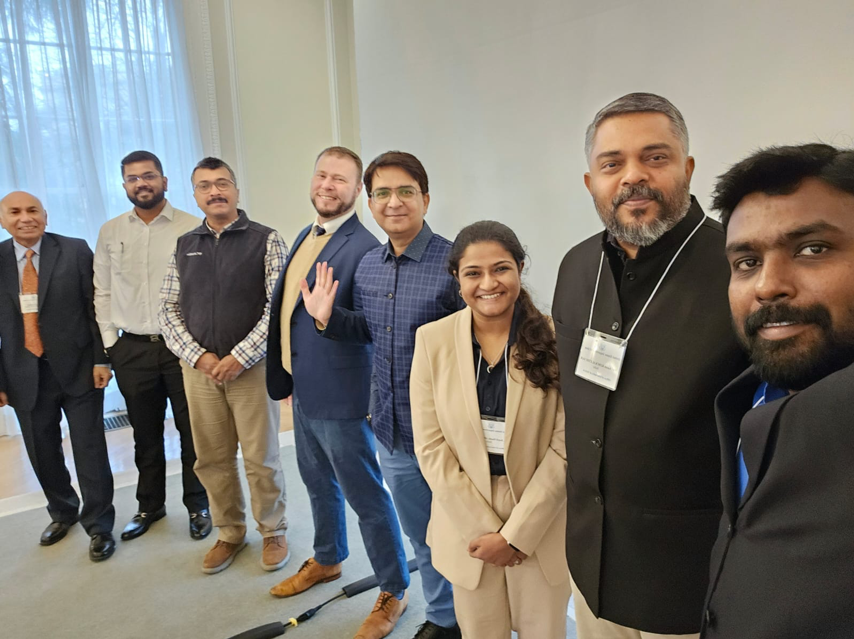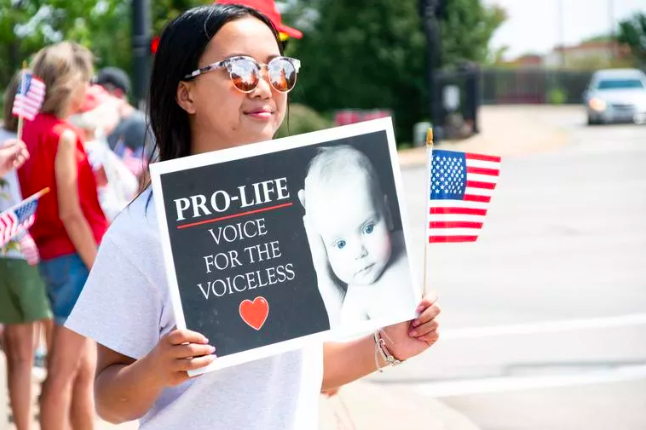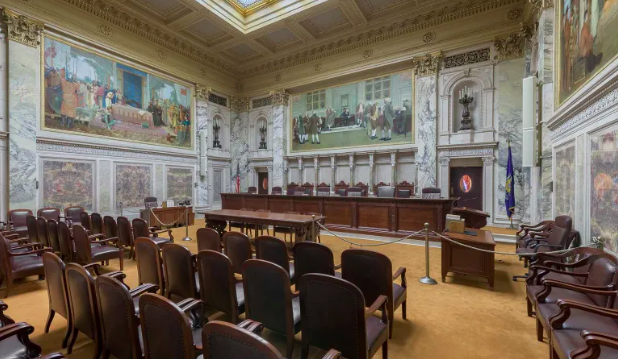Recent government actions (including an Austrian law restricting German translations of the Qur’an, a German circumcision ban, a French headscarf ban, and a Swiss aminaret ban) are restricting Muslims’ religious freedom in western Europe. Please join us on Cornerstone as diverse commentators explore the obstacles that European Muslim communities face and what these challenges mean for the future of religious freedom.
By: Claudia Winkler
Picture this: a fourteen-year-old Muslim girl riding the subway in Germany is approached by a German woman and asked why she wears a headscarf. “Because I want to,” she replies. This answer is met with an emphatic “No you don’t!” and followed by a barrage of criticism invoking common associations with the headscarf like “violence against women,” “oppression,” and “honor killings.” This specific memory belongs to Turkish-German blogger Kuebra Guemuesay (upcoming speaker at the Religious Freedom Project’s December 15 event), but the experience is shared by many Muslim and/or Turkish women in Germany and, more broadly, in Europe.
As Yasemin Yildiz explains , “Depictions of victimized Muslim women, in particular, have become prominent in many parts of contemporary Europe,” and these “abused Muslim women function as facilitating figures in discourse and not as the focal point of concern. […] Turned into reified figures, they are neither the subject nor the object of these discourses, but rather their vehicles” (76, 80). In other words, while images of abused and oppressed Muslim women are often invoked in conversations about human rights and Islam more generally, the voices of real Muslim women are often silenced in Europe’s public sphere.
The image of the Muslim woman as a perpetual, silent victim has emerged as part of a long process of Othering that has been exaggerated during roughly the last decade. In The Crisis of Multiculturalism: Racism in a Neoliberal Age , Alana Lentin and Gavan Titley explain that the early 2000s, particularly after 9/11, were a time in Europe marked by “anxieties about migration, globalization and the socio-political transformations wrought by neoliberal governance” (3). In an attempt to address and manage these growing apprehensions, many European public figures began criticizing multiculturalism as a well-meaning but naive “failed experiment” that was responsible for the mounting social problems of Europe. Such denouncements suggested that multiculturalism had for too long
“valorized difference over commonality, cultural particularity over social cohesion, and an apologetic relativism at the expense of shared values and a commitment to liberty of expression, women’s rights and sexual freedom. Its […] obsessions with self-gratifying practices of respect for cultural difference have been given spatial expression in the parallel societies […], in which alien, repressive and often hostile ways of life are germinated.” (13– 14)
Critics of multiculturalism recommended a “return to the certainties [that multiculturalism] relativized and weakened,” which would be accomplished by the “integration” of “migrants” into European nation-states (14).
The subtext of this storyline of multiculturalism is that there exist certain cultures that are simply incompatible with and threatening to European values. The “culture” of Islam, in particular, has come to be seen as the antithesis to being European , and the religion has been racialized to the extent that “over the last decade, ‘Muslim’ has replaced ‘Southerner’ as the generic term allowing to police and permanently contain Europe’s internal Others” (El-Tayeb xxx). That is to say, most people who are not “‘white and Christian[,]’ […] the smallest common denominator to which debates of European identity are reduced,” are considered perpetual “migrants,” at a minimum, and are often grouped under the catch-all label “Muslim” (El-Tayeb xiv, xx, xxx). Fatima El-Tayeb goes on to explain that
“Islam at times appears as a signifier almost as empty as race, ascribing a combination of naturalized cultural attributes to ‘Muslims’ that has little to do with religious beliefs or even with being a believer. Instead, the trope of the Muslim as Other offers an apparently easy and unambiguous means to divide Europeans and migrants.” (xxx)
What El-Tayeb is describing is a new form of discrimination that exists in the post-Holocaust, postcolonial world, in which racial—that is, biological and genetic—discrimination is taboo and thus perceived as eradicated (Lentin and Titley 49). Instead, discrimination in Europe today occurs along cultural lines, a phenomenon that Étienne Balibar and Immanuel Wallerstein refer to as a
“neoracism […], whose dominant theme is not biological heredity but the insurmountability of cultural differences, a racism which, at first sight, does not postulate the superiority of certain groups or peoples in relation to others but ‘only’ the harmfulness of abolishing frontiers, the incompatibility of lifestyles and traditions.” (qtd. in Weber 7)
In the context of this neoracism, Islam is no longer seen as a religious faith; instead, it is reduced to a culture of violence with fixed gender roles that are incompatible with the human rights culture of “enlightened” Europe, especially in regard to the ideal of gender equality . Various discourses of what it means to be a European have constructed the Muslim man “as embodying essentialist positions on gender, sexuality, national and ethnic identity, as presenting a threat both to minority women and to enlightened European masculinity” (El-Tayeb xliv). The Muslim woman, as already mentioned, has subsequently come to be understood as the silent, oppressed victim of Muslim patriarchy. Thus, the idea that such a woman—the ultimate “victim” of oppression and herself a member of the “violent culture” of Islam—could speak out against gender violence and other forms of violence becomes an impossibility in this environment.
The end result is that Muslim women in particular (and, frankly, most Muslims, period) are kept out of the public sphere, especially in terms of human rights discussions. This, in turn, ultimately hinders meaningful progress in the area of Muslim affairs in Europe. Moreover, keeping authentic Muslim voices out of public dialogue perpetuates misconceptions of Islam and allows for the passage of oppressive laws rooted in fear and ignorance.
Claudia Winkler is the Berkley Center’s communications manager and a member of the Global Communications Group in the Office of the Vice President for Global Engagement.
This piece is an excerpt of an article originally published in Women in German Yearbook: Feminist and Gender Studies in German Literature & Culture, which is published by the University of Nebraska Press. It was originally published in this form on December 2, 2014 for the Religious Freedom Project at Georgetown’s Berkley Center for Religion, Peace, and World Affairs.
THE RFI BLOG

Be More Faithful, Become More Resilient: An Invitation to Religious Institutions

How Soccer Reveals Different Meanings Of ‘Secular’ In France And The US

RFI’s Ismail Royer Meets with Delegation from India

Protecting the Unborn, Mothers, and Medical Ethics: The Stakes of Arkansas’ Amendment

Wisconsin Supreme Court Punishes Catholic Charities for Serving Everyone
CORNERSTONE FORUM

Public Bioethics & the Failure of Expressive Individualism

Religious Liberty in American Higher Education

Scotland’s Kate Forbes and the March of Secularism

70 Years of Religious Freedom in Sweden: Prospects and Challenges


